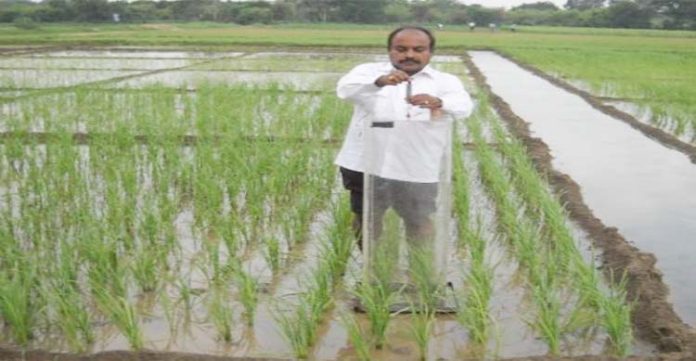Contradicting with the report appeared in a section of media that GHG emissions from rice cultivation alarmingly contributing to Global Warming, The Indian Council of Agricultural Research – Indian Institute of Rice Research (ICAR-IIRR), Hyderabad armed with its recent study contended that “No other irrigated dry crop produces such a huge quantity of biomass as that of rice and sequestered the atmospheric carbon thereby help reducing the global warming impact.”
“Rice cultivate, that mostly practiced under continuous submergence conditions emits methane (CH4) – that froth out during microbial decomposition of organic matter under anaerobic conditions in the soil. Continues submergence, higher organic C content of soil, use of organic manures coupling with puddling of soil enhances CH4 emission. In addition to rice cultivation, burning of crop residues and enteric fermentation in ruminants also act as major sources of CH4 emission. Besides, rice cultivation also helps mitigate CO2 emissions by increasing the sequestration of atmospheric carbon dioxide into soil and crop biomass in considerable quantities,” said the study report.
The finding says that “At an average paddy yield of 5.21 tonnes per hectares, Telangana state produce 21.8 million tones of paddy along with a total straw yield of 23.9 million tonnes. Thus, rice cultivation in Telangana sequestered 15.60 million tones of atmospheric CO2 from the total biomass produced from nearly 40.0 Lakh hectares of rice area in the state at total biomass production of 11.18 tonnes per hectares (Paddy yield + straw yield). As such, no other irrigated Dry (I.D), crop grown does produce such a huge quantity of biomass as that of rice and sequestered the atmospheric carbon. Thus, the rice cultivation compensates the enhanced CH4 emissions by sequestering huge atmospheric CO2. The C sequestered in soil increases the SOC pool that not only mitigates CO2 emission but also enhances soil productivity, thereby reduces global warming,” reveal the study.
“In India, agriculture sector contributes 21% to its total greenhouse gas (GHGs) emissions, which accounts only 1.1% of the total global GHGs emissions from all the sources. A comparison of per capita emission of GHGs in 2010 has shown that China emitted 4 times and USA 10 times more GHGs emissions than India.







